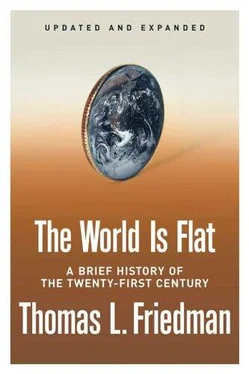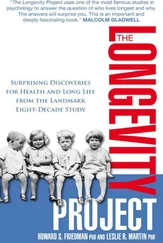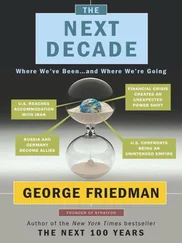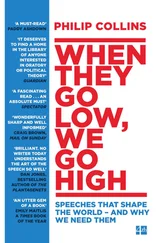Well, they took off-along with a lot of other things that came together while I was sleeping. And that is why I argue in this book that around the year 2000 we entered a whole new era: Globalization 3.0. Globalization 3.0 is shrinking the world from a size small to a size tiny and flattening the playing field at the same time. And while the dynamic force in Globalization 1.0 was countries globalizing and the dynamic force in Globalization 2.0 was companies globalizing, the dynamic force in Globalization 3.0-the thing that gives it its unique character-is the newfound power for individuals to collaborate and compete globally. And the lever that is enabling individuals and groups to go global so easily and so seamlessly is not horsepower, and not hardware, but software— all sorts of new applications-in conjunction with the creation of a global fiber-optic network that has made us all next-door neighbors. Individuals must, and can, now ask, Where do I fit into the global competition and opportunities of the day, and how can I, on my own, collaborate with others globally?
But Globalization 3.0 not only differs from the previous eras in how it is shrinking and flattening the world and in how it is empowering individuals. It is different in that Globalization 1.0 and 2.0 were driven primarily by European and American individuals and businesses. Even though China actually had the biggest economy in the world in the eighteenth century, it was Western countries, companies, and explorers who were doing most of the globalizing and shaping of the system. But going forward, this will be less and less true. Because it is flattening and shrinking the world, Globalization 3.0 is going to be more and more driven not only by individuals but also by a much more diverse—non-Western, non-white-group of individuals. Individuals from every corner of the flat world are being empowered. Globalization 3.0 makes it possible for so many more people to plug and play, and you are going to see every color of the human rainbow take part.
(While this empowerment of individuals to act globally is the most important new feature of Globalization 3.0, companies-large and small-have been newly empowered in this era as well. I discuss both in detail later in the book.)
Needless to say, I had only the vaguest appreciation of all this as I left Nandan's office that day in Bangalore. But as I sat contemplating these changes on the balcony of my hotel room that evening, I did know one thing: I wanted to drop everything and write a book that would enable me to understand how this flattening process happened and what its implications might be for countries, companies, and individuals. So I picked up the phone and called my wife, Ann, and told her, “I am going to write a book called The World Is Flat.” She was both amused and curious-well, maybe more amused than curious! Eventually, I was able to bring her around, and I hope I will be able to do the same with you, dear reader. Let me start by taking you back to the beginning of my journey to India, and other points east, and share with you some of the encounters that led me to conclude the world was no longer round-but flat.
Jaithirth “Jerry” Rao was one of the first people I met in Bangalore—and I hadn't been with him for more than a few minutes at the Leela Palace hotel before he told me that he could handle my tax returns and any other accounting needs I had-from Bangalore. No thanks, I demurred, I already have an accountant in Chicago. Jerry just smiled. He was too polite to say it-that he may already be my accountant, or rather my accountant's accountant, thanks to the explosion in the outsourcing of tax preparation.
“This is happening as we speak,” said Rao, a native of Mumbai, formerly Bombay, whose Indian firm, MphasiS, has a team of Indian accountants able to do outsourced accounting work from any state in America and the federal government. “We have tied up with several small and medium-sized CPA firms in America.”
“You mean like my accountant?” I asked. “Yes, like your accountant,” said Rao with a smile. Rao's company has pioneered a work flow software program with a standardized format that makes the outsourcing of tax returns cheap and easy. The whole process starts, Jerry explained, with an accountant in the United States scanning my last year's tax returns, plus my W-2, W-4, 1099, bonuses, and stock statements-everything-into a computer server, w
hich is physically located in California or Texas. “Now your accountant, if he is going to have your taxes done overseas, knows that you would prefer not to have your surname be known or your Social Security number known [to someone outside the country], so he can choose to suppress that information,” said Rao. “The accountants in India call up all the raw information directly from the server in America [using a password], and they complete your tax returns, with you remaining anonymous. All the data stays in the U.S. to comply with privacy regulations... We take data protection and privacy very seriously. The accountant in India can see the data on his screen, but he cannot take a download of it or print it out-our program does not allow it. The most he could do would be to try to memorize it, if he had some ill intention. The accountants are not allowed to even take a paper and pen into the room when they are working on the returns.”
I was intrigued at just how advanced this form of service outsourcing had become. “We are doing several thousand returns,” said Rao. What's more, “Your CPA in America need not even be in their office. They can be sitting on a beach in California and e-mail us and say, 'Jerrv> you are really good at doing New York State returns, so you do Tom's returns. And Sonia, you and your team in Delhi do the Washington and Florida returns.' Sonia, by the way, is working out of her house in India, with no overhead [for the company to pay]. 'And these others, they are really complicated, so I will do them myself.”
In 2003, some 25,000 U.S. tax returns were done in India. In 2004, the number was 100,000. In 2005, it is expected to be 400,000. In a decade, you will assume that your accountant has outsourced the basic preparation of your tax returns-if not more.
“How did you get into this?” I asked Rao.
“My friend Jeroen Tas, a Dutchman, and I were both working in California for Citigroup,” Rao explained. “I was his boss and we were coming back from New York one day together on a flight and I said that I was planning to quit and he said, 'So am I.' We both said, 'Why don't we start our own business?' So in 1997-98, we put together a business plan to provide high-end Internet solutions for big companies... Two years ago, though, I went to a technology convention in Las Vegas and was approached by some medium-size [American] accounting firms, and they said they could not afford to set up big tax outsourcing operations to India, but the big guys could, and [the medium guys] wanted to get ahead of them. So we developed a software product called VTR— Virtual Tax Room-to enable these medium-size accounting firms to easily outsource tax returns.”
These midsize firms “are getting a more level playing field, which they were denied before,” said Jerry. “Suddenly they can get access to the same advantages of scale that the bigger guys always had.”
Is the message to Americans, “Mama, don't let your kids grow up to be accountants”? I asked.
Not really, said Rao. “What we have done is taken the grunt work. You know what is needed to prepare a tax return? Very little creative work. This is what will move overseas.”
“What will stay in America?” I asked.
“The accountant who wants to stay in business in America will be the one who focuses on designing creative complex strategies, like tax avoidance or tax sheltering, managing customer relationships,” he said. “He or she will say to his clients, 'I am getting the grunt work done efficiently far away. Now let's talk about how we manage your estate and what you are going to do about your kids. Do you want to leave some money in your trusts?' It means having the quality-time discussions with clients rather than running around like chickens with their heads cut off from February to April, and often filing for extensions into August, because they have not had the quality time with clients.”
Читать дальше












